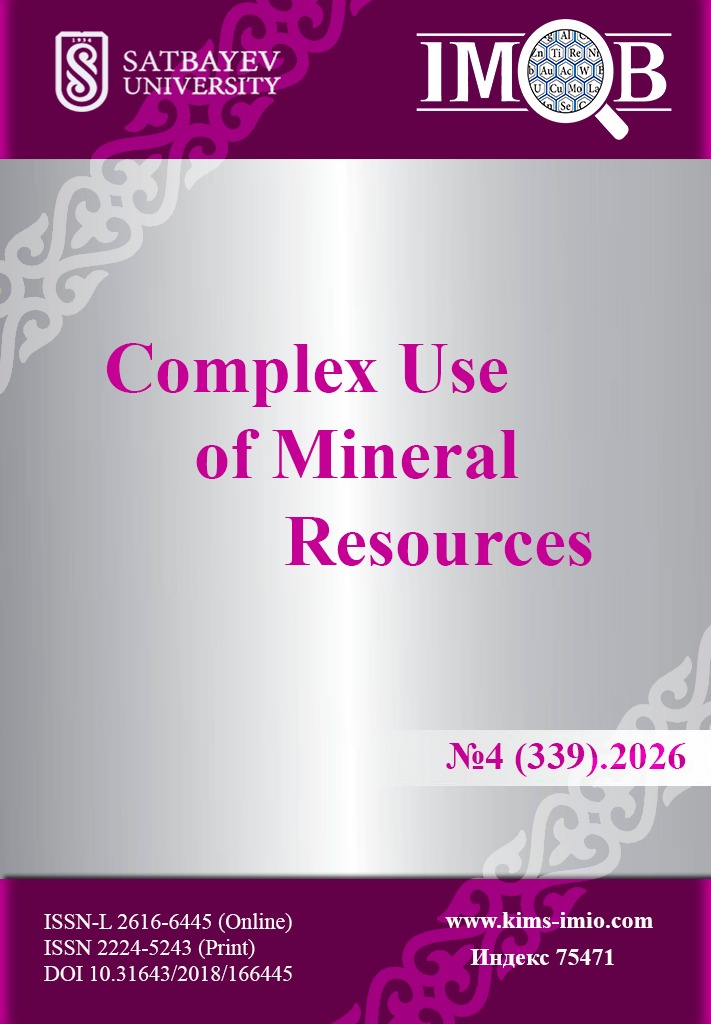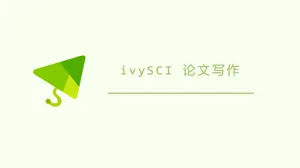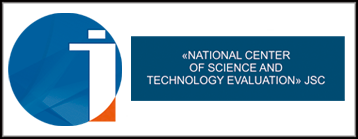Study of the kinetics of sorption of praseodymium and neodymium ions using interpolymer systems based on KU-2-8 and AB-17-8 in salt forms
DOI:
https://doi.org/10.31643/2026/6445.37Keywords:
interpolymer systems, kinetic models, sorption, neodymium and praseodymium ions, cation exchanger KU-2-8, anion exchanger AB-17-8Abstract
This paper presents a study of the kinetics of neodymium and praseodymium ions sorption using interpolymer systems based on KU-2-8 and AB-17-8 in salt forms. Sorption of target ions was carried out in a dynamic mode (with constant stirring) in interpolymer systems in molar ratios of 4:2 and 3:3 (cation exchanger to anion exchanger). Aliquots were collected during certain time intervals, then widely known kinetic models of sorption were used to construct linear graphs. According to the obtained results, the best model for describing sorption was pseudo-first order (the highest value for the 4:2 system = 0.97885 and 0.98112; for the 3:3 system = 0.9647 and 0.98779). Such results are important for understanding the mechanisms of the sorption process and establishing the limiting factor that can slow down this process. The kinetic model of pseudo-first order may indicate the need to improve the washing out of counterions from the polyelectrolyte matrix for their high ionization and accessibility of functional groups for metal ions. This assumption can be used in the future to optimize industrial schemes of ion-exchange sorption of REE.
Downloads
References
Papagianni S, Moschovi AM, Sakkas KM, Chalaris M, Yakoumis I. Preprocessing and Leaching Methods for Extraction of REE from Permanent Magnets: A Scoping Review. AppliedChem. 2022; 2(14):199-212. https://doi.org/10.3390/appliedchem2040014
Binnemans K, Jones PT, Blanpain B, Van Gerven T, Yang Y, Walton A, Buchert M. Recycling of Rare Earths: A Critical Review. Journal of Cleaner Production. 2013; 51:1–22. http://dx.doi.org/10.1016/j.jclepro.2012.12.037
Gkika DA, Chalaris M, Kyzas GZ. Review of Methods for Obtaining Rare Earth Elements from Recycling and Their Impact on the Environment and Human Health. Processes. 2024; 12:1235. https://doi.org/10.3390/pr12061235
Wang G, Xu J, Ran L, Zhu R et al. A green and efficient technology to recover rare earth elements from weathering crusts. Nature Sustainability. 2022; 6(1):81-92. https://doi.org/10.1038/s41893-022-00989-3
Depraiter L, Goutte S. The role and challenges of rare earths in the energy transition. Resources Policy. 2023; 86(6):104-137. https://doi.org/10.1016/j.resourpol.2023.104137
Balaram V. Rare earth elements: A review of applications, occurrence, exploration, analysis, recycling, and environmental impact. Geoscience Frontiers. 2019; 10(4):1285-1303. https://doi.org/10.1016/j.gsf.2018.12.005
Hurst C. China’s Rare Earth Elements Industry: What Can the West Learn? Institute for the Analysis of Global Security; Fort Leavenworth. 2010. KS, USA.
Filho WL. et al. Understanding rare earth elements as critical raw materials. Sustainability. 2023; 15(3):1919.
Humphries M. Rare Earth Elements: The Global Supply Chain: Congressional Research Service. The Library of Congress. 2010. Washington, DC, USA.
Zhang W, Li Ch, Xu Q, Hu K, Chen H, Liu Y, Wan Y, Zhang J, Li X. Effective adsorption and recovery of rare earth elements from wastewater by activated talc. Applied Clay Science. 2024; 251. https://doi.org/107312. 10.1016/j.clay.2024.107312
Asadollahzadeh M, Torkaman R, Torab-Mostaedi M. Extraction and separation of rare earth elements by adsorption approaches: current status and future trends. Separation & Purification Reviews. 2021; 50(4):1-28. https://doi.org/10.1080/15422119.2020.1792930
NI’AM A C. et al. Recovery of neodymium from waste permanent magnets by hydrometallurgy using hollow fibre supported liquid membranes. Solvent Extraction Research and Development. 2020; 27(2):69-80. https://doi.org/10.15261/serdj.27.69
Klemettinen A. et al. Recovery of rare earth elements from the leaching solutions of spent NdFeB permanent magnets by selective precipitation of rare earth oxalates. Minerals. 2023; 13(7):846. https://doi.org/10.3390/min13070846
Nogueira M. et al. Recovery of Nd3+ and Dy3+ from E-Waste Using Adsorbents from Spent Tyre Rubbers: Batch and Column Dynamic Assays. Molecules. 2024; 30(1):92. https://doi.org/10.3390/molecules30010092
Erust C, Akcil A, Tuncuk A, Deveci H, Yazici EY. A Multi-stage Process for Recovery of Neodymium (Nd) and Dysprosium (Dy) from Spent Hard Disc Drives (HDDs). Miner. Process. Extr. Metall. Rev. 2019; 42:90-101. https://doi.org/10.1080/08827508.2019.1692010
Behera SS, Parhi PK. Leaching kinetics study of neodymium from the scrap magnet using acetic acid. Separation and Purification Technology. 2016; 160:59-66. https://doi.org/10.1016/j.seppur.2016.01.014
Riaño S, Petranikova M, Onghena B. Separation of rare earths and other valuable metals from deep-eutectic solvents: A new alternative for the recycling of used NdFeB magnets. Rsc Advances. 2017; 7(51):32100-32113. https://doi.org/10.1039/c7ra06540j
Hérès X, Blet V, Di Natale P, Ouaattou A, Mazouz H, Dhiba D, Cuer F. Selective extraction of rare earth elements from phosphoric acid by ion exchange resins. Metals. 2018; 8(9):682. https://doi.org/10.3390/met8090682
Chen Z, Zhan L, Chen J, Kallem P. Recent advances in selective separation technologies of rare earth elements: a review. Journal of Environmental Chemical Engineering. 2022; 10(1):107104. https://doi.org/10.1016/j.jece.2021.107104
Pereao O, Bode-Aluko Ch, Fatoba O, Petric L. Rare earth elements removal techniques from water/wastewater: A review. Desalination and water treatment. 2018; 130:71-86. https://doi.org/10.5004/dwt.2018.22844
El Ouardi Y, Sami V, Markku L, Eveliina R, Katri L. The recent progress of ion exchange for the separation of rare earths from secondary resources–A review Hydrometallurgy. 2023; 218:106047. https://doi.org/10.1016/j.hydromet.2023.106047
Virolainen S, Repo E, Sainio T. Recovering rare earth elements from phosphogypsum using a resin-in-leach process: Selection of resin, leaching agent, and eluent. Hydrometallurgy. 2019; 189:105125. https://doi.org/10.1016/j.hydromet.2019.105125
Bao S, Hawker W, Vaughan J. Scandium loading on chelating and solvent impregnated resin from sulfate solution. Solvent extraction and ion exchange. 2018; 36(1):1-14. https://doi.org/10.1080/07366299.2017.1412917
Ismailova ShA, Jumadilov TK, Bekturov EA. Features of complex formation of rare-crosslinked polyacrylic acid with polyacrylamide hydrogel. Izvestiya MES RK NAS RK, ser. chem. 2004; 4:80-85.
Ismailova ShA. Features of interaction of three-dimensional structures based on polycarboxylic acids and nitrogen-containing polymers: dissertation for the degree of candidate of chemical sciences. 02.00.06, Almaty, ICN MES RK. 2006, 109.
Jumadilov T, Totkhuskyzy B, Malimbayeva Z, Kondaurov R, Imangazy A, Khimersen K, Grazulevicius J. Impact of Neodymium and Scandium Ionic Radii on Sorption Dynamics of Amberlite IR120 and AB-17-8 Remote Interaction. Materials. 2021; 14:5402. https://doi.org/10.3390/ma14185402
Talkybek J, Kabzhalelov K, Malimbayeva Z, Korganbayeva Zh. Features of Selective Sorption of Neodymium and Praseodymium Ions by Interpolymer Systems Based on Industrial Sorbents KU-2-8 and AB-17-8. Polymers. 2025; 17(4):440. https://doi.org/10.3390/polym17040440
Jumadilov T, Khimersen Kh, Haponiuk J, Totkhuskyzy B. Enhanced Lutetium Ion Sorption from Aqueous Solutions Using Activated Ion Exchangers. Polymers 2024; 16(2):220. https://doi.org/10.3390/polym16020220
Revellame ED, Fortela D, Sharp W, Hernandez R. Adsorption kinetic modeling using pseudo-first order and pseudo-second order rate laws: A review. Cleaner Engineering and Technology. 2020; 1:100032. https://doi.org/10.1016/j.clet.2020.100032
Vareda JP, Valente AJM, Durães L. Heavy metals in Iberian soils: Removal by current adsorbents/amendments and prospective for aerogels. Advances in Colloid and Interface Science. 2016; 237:28-42. https://doi.org/10.1016/j.cis.2016.08.009
Ho YS, McKay G. Pseudo-second order model for sorption processes. Process biochemistry. 1999; 34(5):451-465.
Fawzy MA, Gomaa M. Use of algal biorefinery waste and waste office paper in the development of xerogels: A low cost and eco-friendly biosorbent for the effective removal of congo red and Fe (II) from aqueous solutions. Journal of Environmental Management. 2020; 262:110380. https://doi.org/10.1016/j.jenvman.2020.110380
Vareda JP. On validity, physical meaning, mechanism insights and regression of adsorption kinetic models. Journal of Molecular Liquids. 2023; 376:121416. https://doi.org/10.1016/j.molliq.2023.121416
Zhang J. Physical insights into kinetic models of adsorption. Separation and Purification Technology. 2019; 229:115832. https://doi.org/10.1016/j.seppur.2019.115832
Musah M, Azeh Y, Mathew JT, Tanko MU. Adsorption kinetics and isotherm models: a review. CaJoST. 2022; 4(1):20-26. https://doi.org/10.4314/cajost.v4i1.3
Farouq R, Yousef NS. Equilibrium and kinetics studies of adsorption of copper (II) ions on natural biosorbent. International Journal of Chemical Engineering and Applications. 2015; 6(5):319. https://doi.org/10.7763/IJCEA.2015.V6.503
Santhi T, Manonmani S, Smitha T. Kinetics and isotherm studies on cationic dyes adsorption onto annona squmosa seed activated carbon. International Journal of Engineering Science and Technology. 2010; 2(3):287-295.
Downloads
Published
How to Cite
Issue
Section
License
Copyright (c) 2025 T.K. Jumadilov, K.R. Kabzhalelov, Kh. Khimersen, B. Totkhuskyzy, Zh.S. Mukatayeva

This work is licensed under a Creative Commons Attribution 4.0 International License.


























